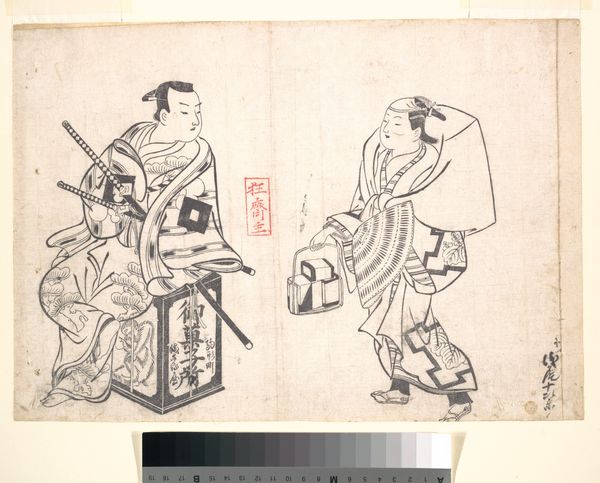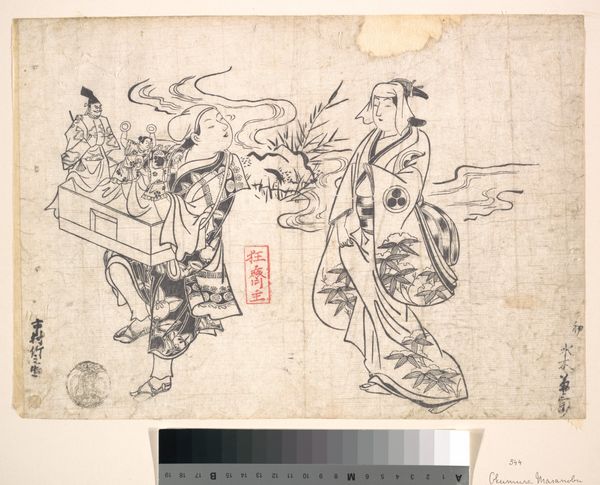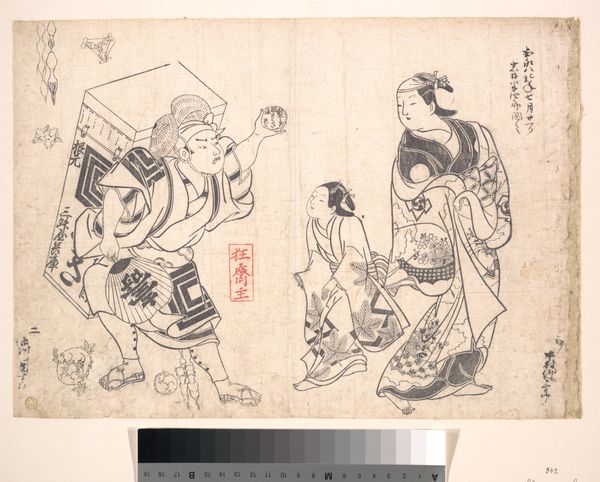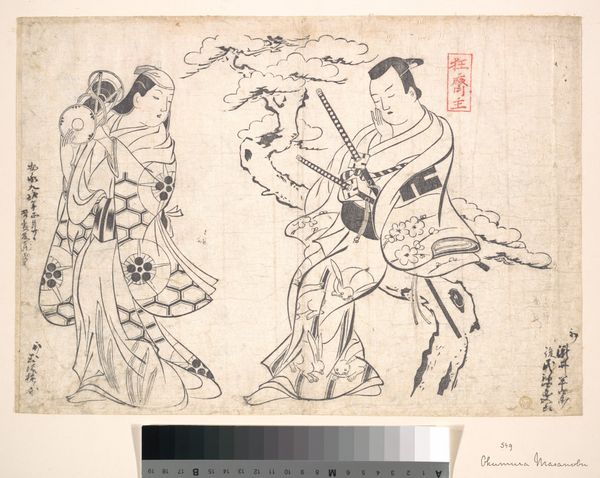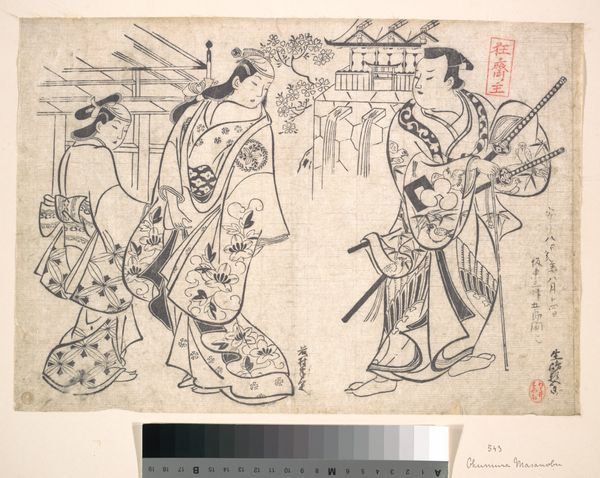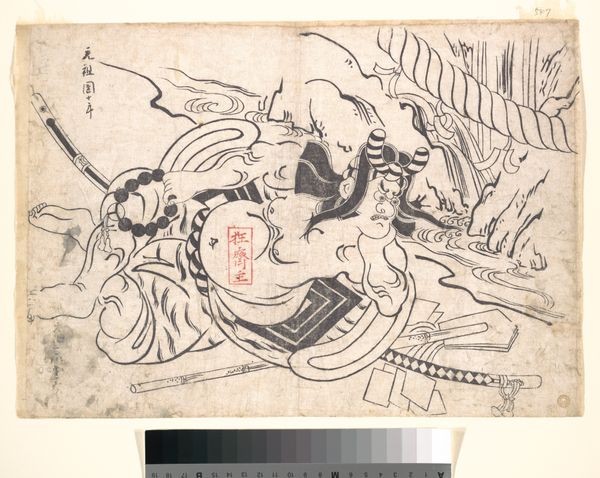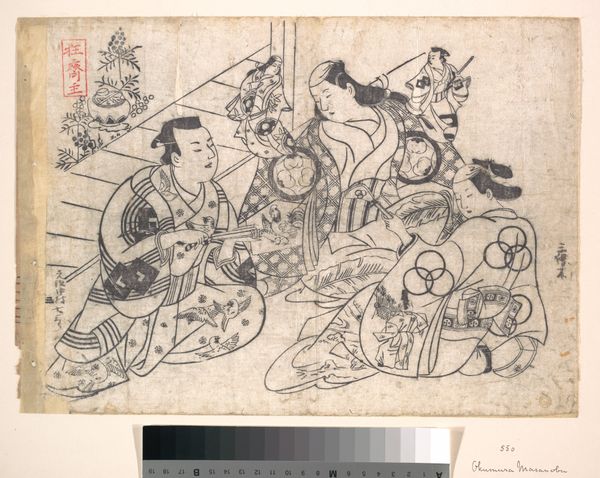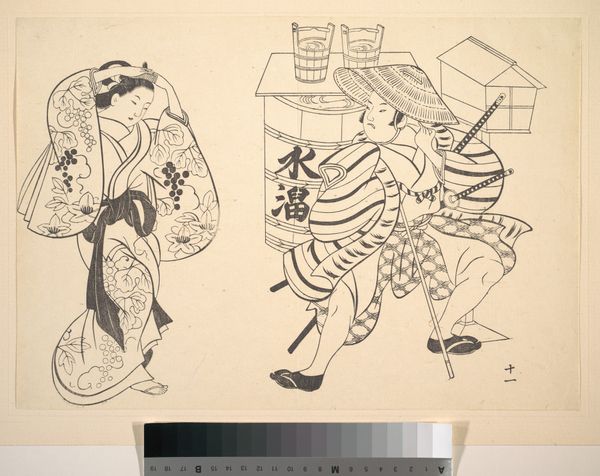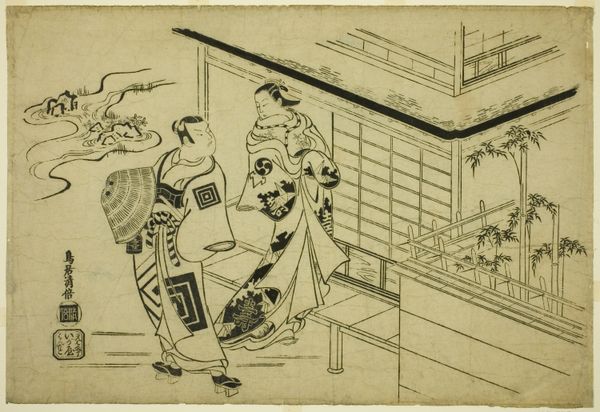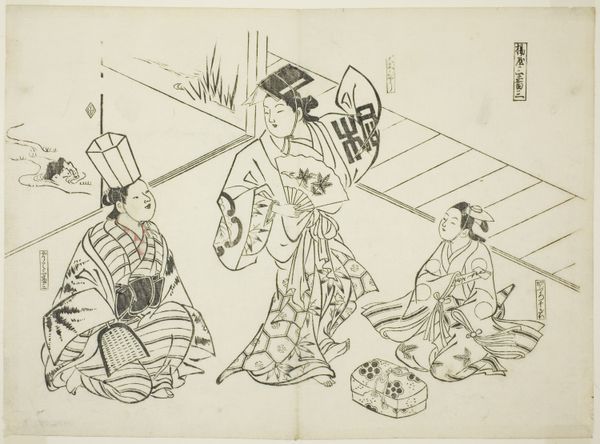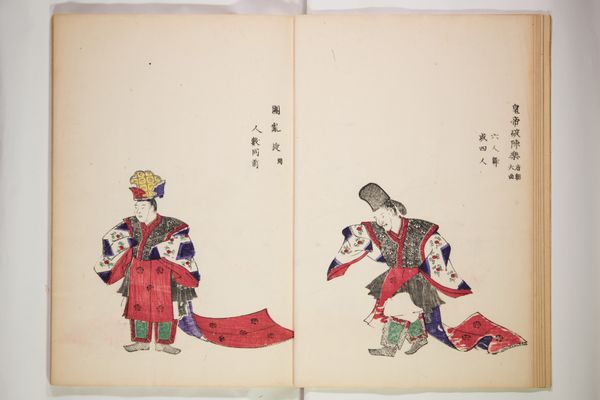
Scene from a Drama "Hoshiai Nagoya" Performed at the Nakamura Theatre 1707 - 1711
0:00
0:00
drawing, print, paper, ink, woodcut
#
drawing
#
ink drawing
#
narrative-art
# print
#
asian-art
#
ukiyo-e
#
japan
#
figuration
#
paper
#
ink
#
woodcut
#
history-painting
Dimensions: 10 3/8 x 14 3/4 in. (26.4 x 37.5 cm)
Copyright: Public Domain
Curator: Ah, yes, Masanobu’s “Scene from a Drama 'Hoshiai Nagoya' Performed at the Nakamura Theatre,” dating roughly from 1707-1711. Notice how the woodcut process, using ink on paper, allows for the relatively easy production and distribution of these images. Editor: It's fascinating to consider that this was essentially a printed snapshot of a play! I’m struck by how simple the composition is, and how the black ink contrasts on the paper. How does the knowledge of it being a print change how you see the artwork? Curator: It’s key to understanding it. Ukiyo-e prints like this were essentially consumer goods. They served to popularize theatrical performances and, more broadly, the culture surrounding Kabuki. The materials - the paper, the ink, the woodblocks - these were commodities involved in a larger system of production and consumption. Think about the labor involved in creating these prints: the carvers, the printers, all contributing to a visual culture that celebrated, and also marketed, the spectacle of theater. How does the relatively inexpensive method impact the value we assign to it? Editor: That's interesting, since woodcuts allow for multiples to be created. In that regard, does the process flatten the hierarchy of "high art" versus, say, craft or commercial art? Curator: Precisely. It challenges the traditional notions of the unique art object. This wasn’t some precious painting made for a wealthy patron, but a mass-produced image intended for a wider audience. And notice the emphasis on line and graphic quality, a direct result of the woodcut technique itself. Editor: So the very nature of its creation democratized art viewing in a way? It brought images of the theater, a luxury experience, to the masses through printmaking technology. Curator: Exactly. The accessibility afforded by the medium reshaped the art world and made it responsive to popular culture, defying conventional social roles associated with artworks. Editor: Thinking about this work through the lens of production and consumption gives it a whole new meaning. I was focusing on the scene itself, but the *how* it was made is just as vital. Thanks! Curator: My pleasure! Understanding the materiality is fundamental to interpreting its broader cultural significance.
Comments
No comments
Be the first to comment and join the conversation on the ultimate creative platform.
